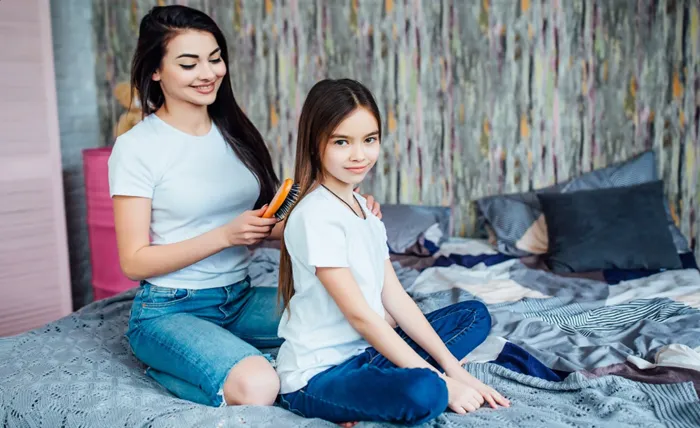Shopping for clothes during the pre-teen and teenage years can feel like navigating a moving target. One month everything fits perfectly, and the next month the same outfit is suddenly too short in the sleeves or tight across the shoulders. Your daughter is growing quickly—physically and emotionally—and the clothes she wears play a big role in how confident and comfortable she feels. Choosing the right fit is not simply about size labels; it’s about understanding body changes, comfort, style preferences, and the right brands that are designed with growing girls in mind.
Understanding That Sizes Are Not Universal
One of the biggest frustrations for teens (and parents) is that sizing isn’t standard from one brand to another. A size “10-12” in one store might fit completely differently than the same size in another. That’s why it’s helpful to focus less on the number on the tag and more on how the garment actually fits the body. Knowing your daughter’s measurements—especially bust, waist, and hip—can make online and in-store shopping far more successful. Keep these written down or saved on your phone so you always have them handy.
Prioritising Comfort Alongside Style
As your daughter’s body starts to change, she may become more sensitive to how clothing feels and how it fits. Soft, breathable fabrics like cotton or modal blends are usually more comfortable for everyday wear than stiff materials that restrict movement. Stretch panels, adjustable waistbands, and seamless fabrics can all help your teen feel more relaxed in her clothes, particularly if she’s still adjusting to sudden growth spurts. Comfort doesn’t have to mean boring—today’s apparel options combine softness and style beautifully.
Learning What Styles Work for Her Body Type
Every teen is shaped differently, and learning which cuts flatter her body can make shopping easier and more positive. A girl who is tall and slim might prefer longer inseams or tunics, while someone who is curvier may feel more comfortable in structured yet flexible fabrics that provide coverage and support. Helping her recognise what makes her feel confident—not just what’s trendy—gives her a healthy foundation for body awareness and self-expression.
Planning Ahead for Growth Spurts
Between 10 and 16, teens can grow rapidly in height, shoulder width, and chest size. When choosing clothes, consider how long they’ll stay wearable before they become too small. Slightly longer tops, adjustable waist pants, and stretch fabrics can stay useful for multiple seasons. If your daughter is right in the middle of a growth spurt, it may be wise to buy a size with a little extra room without going so large that the clothes look sloppy or uncomfortable.
Considering Layering and Versatile Pieces
Layering is not only stylish—it’s practical. A base layer tank or cami can add comfort under tops that might otherwise feel itchy or slightly see-through. Cardigans, overshirts, and light jackets give teens more control over their comfort throughout the day as temperatures change at school or outdoors. Simple, mix-and-match pieces also create more outfit possibilities without overstuffing the wardrobe.
Involving Her in the Decision-Making Process
Even if you are paying for her clothes, your daughter will feel more confident wearing outfits she has helped choose. Let her express herself through colour, pattern, and style while still guiding her when it comes to fit and practicality. Turning shopping into a team experience rather than a parent-only decision helps avoid tension and encourages open conversations about comfort, modesty, and confidence.
Don’t Forget Underlayers and the Right Foundation Pieces
Good clothing starts from the foundation layer. As her body changes, well-fitting underwear and supportive base garments become especially important. A proper first bra, soft seamless pieces, and comfortable underwear styles can help clothing fit better and feel more secure. Choosing a gentle, age-appropriate teen bra that offers comfort without extra padding can make the transition feel more natural and confidence-boosting during early development. Many young teens feel awkward during this stage, so selecting soft, supportive styles can make a big difference in daily comfort.
Building Confidence Through Fit, Not Just Fashion
The teenage years can be emotionally delicate, and discomfort with clothing can sometimes reflect deeper insecurities about growing up. When clothes fit well and feel good, your daughter is more likely to feel confident in school, social settings, and new situations. Help her view clothing as a tool for confidence—not comparison. Every teen grows at her own pace, and the right wardrobe helps her feel strong during these transitions.







